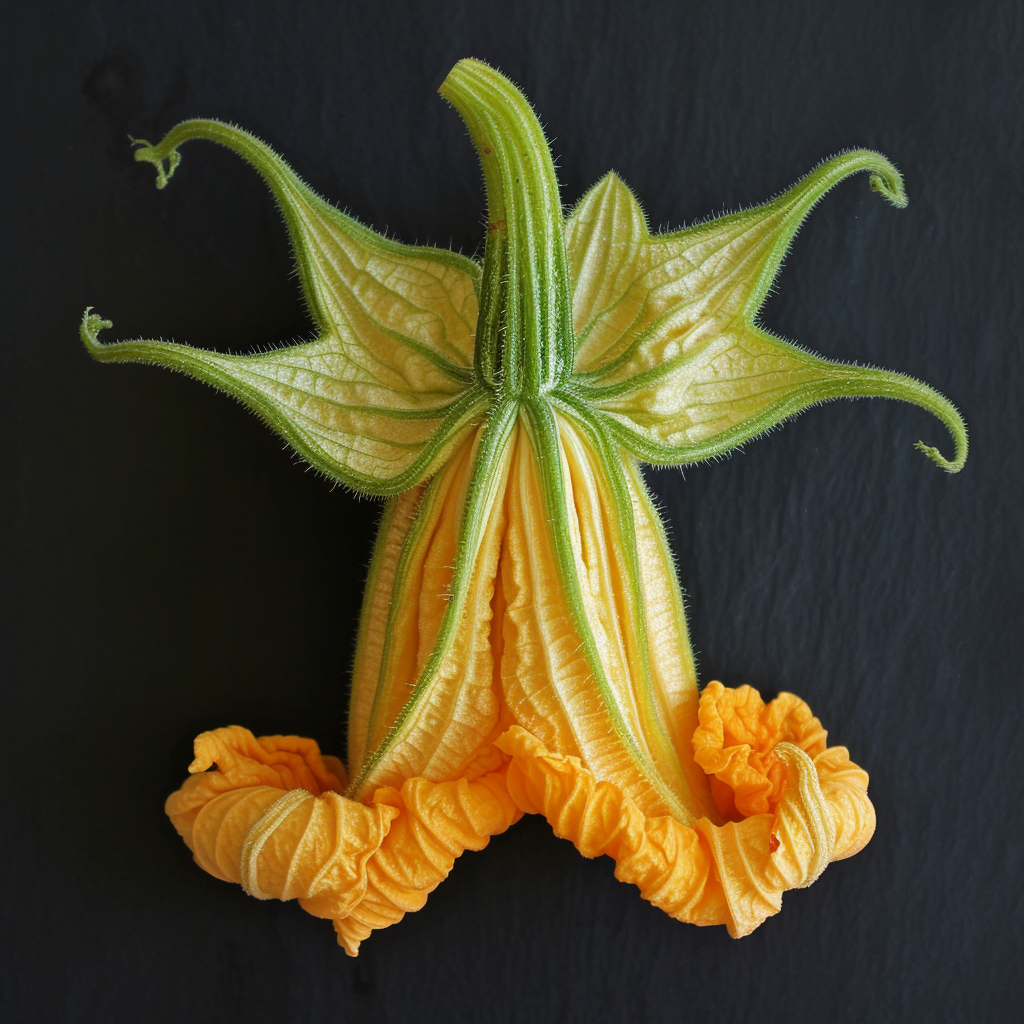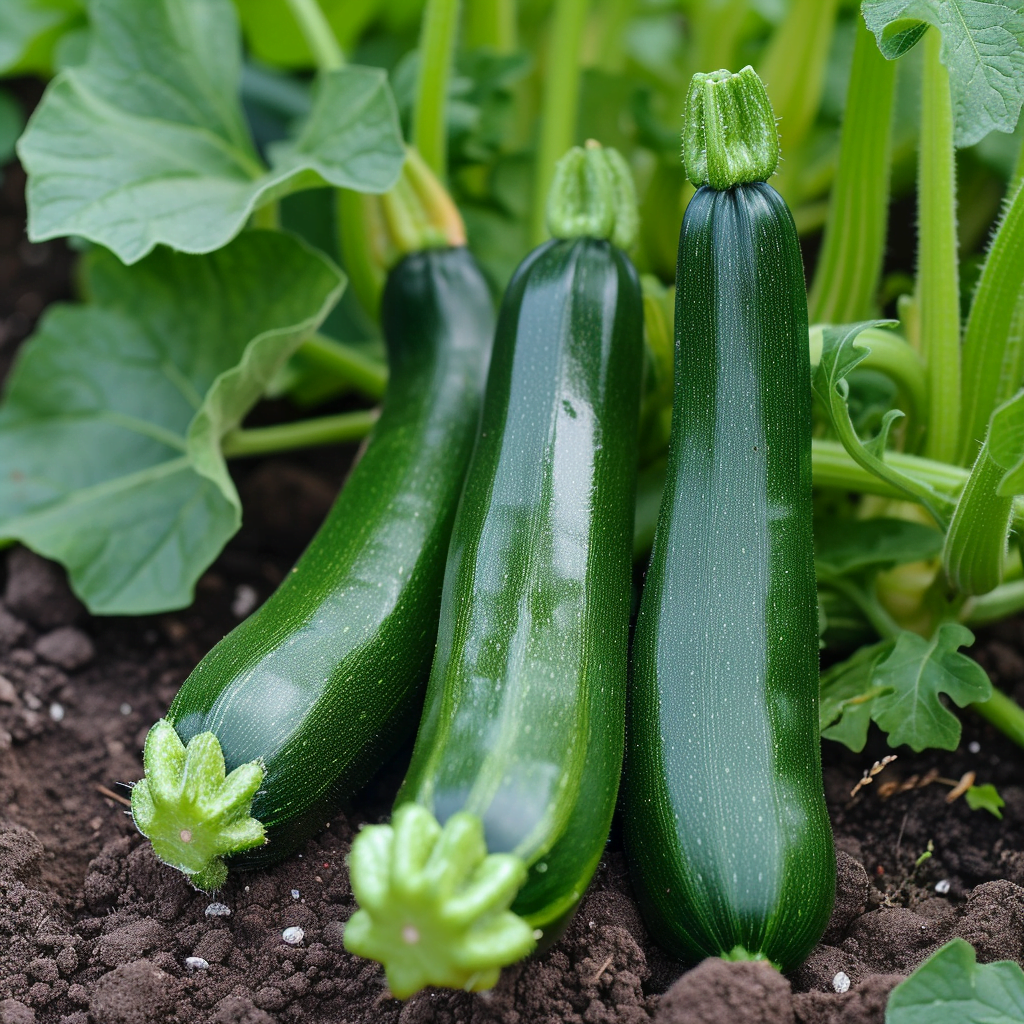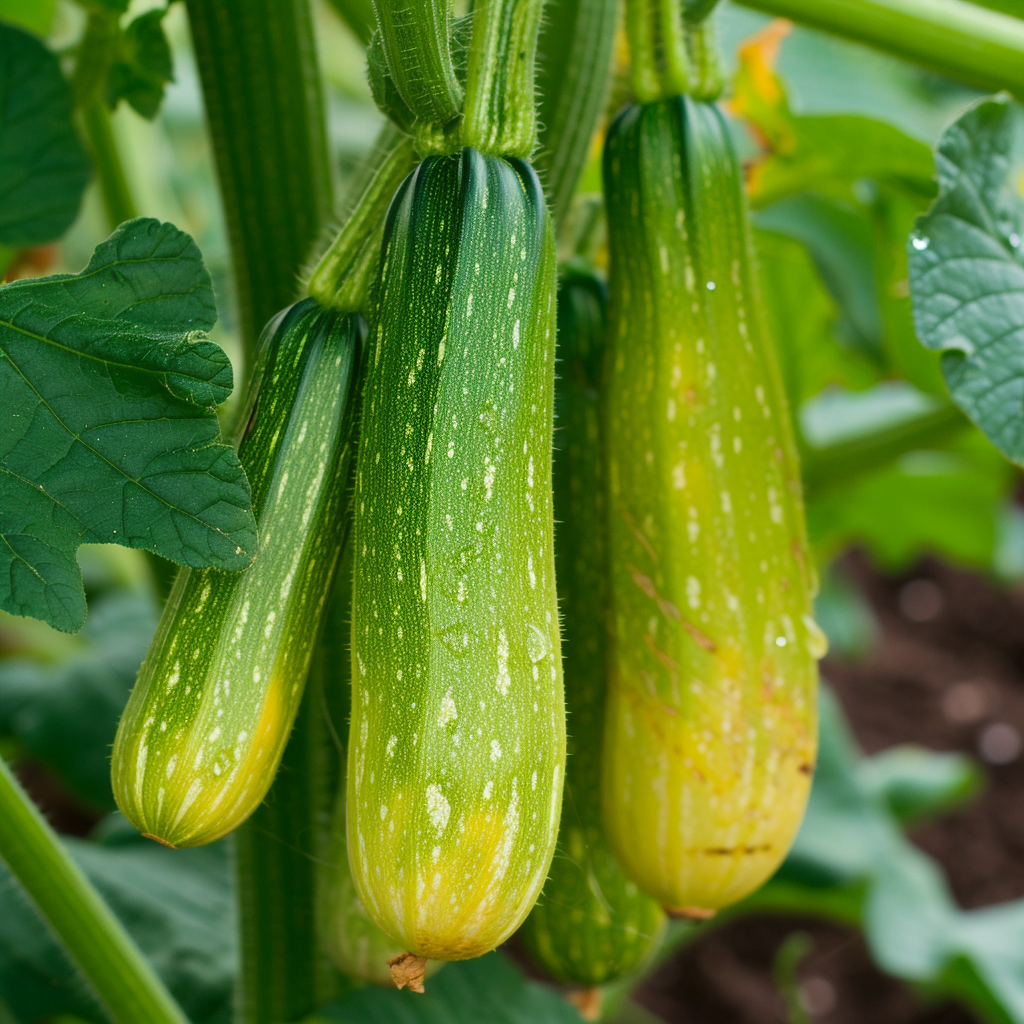Are you wondering when do zucchini plants stop producing those delicious squash that you can’t get enough of? Well, you’re in luck! In this article, we will explore the timeline of a zucchini plant’s productivity and discuss the factors that can affect when it stops producing. So, grab your gardening gloves and get ready to learn all about when to expect the end of zucchini season!
Factors Affecting Zucchini Plant Production
Climate and Temperature
The climate and temperature play a vital role in the production of zucchini plants. Zucchini plants thrive in warm climates with temperatures between 70°F and 85°F (21°C and 29°C). Temperatures outside of this range can negatively impact plant growth and production. Extreme heat can cause the plants to wilt and become stressed, while cold temperatures can slow down growth and lead to reduced yields. It is important to choose the right time to plant zucchini, taking into consideration the climate and temperature of your region.
Soil Conditions
The quality of the soil is crucial for the successful production of zucchini plants. Zucchini plants prefer well-draining soil that is rich in organic matter. The soil should have a pH level between 6 and 7.5, which is slightly acidic to neutral. If the soil is too compacted or lacks proper drainage, it can lead to waterlogging and root rot. This can stunt the growth of the plants and reduce their ability to produce fruits. Prior to planting zucchini, it is recommended to prepare the soil by adding compost or organic matter to improve its structure and fertility.
Fertilization and Nutrients
Proper fertilization and nutrient management are essential for the optimal growth and production of zucchini plants. Zucchini plants have high nutrient requirements and benefit from regular fertilization. Before planting, it is beneficial to incorporate a well-balanced organic fertilizer into the soil. Additionally, applying a nitrogen-rich fertilizer during the vegetative growth stage can promote lush foliage and healthy plant development. Regularly monitoring the nutrient levels in the soil and making adjustments, if necessary, will help ensure that the plants have access to all the necessary nutrients for maximum production.
Pest and Disease Infestation
Pests and diseases can significantly impact the production of zucchini plants. Common pests that affect zucchini plants include aphids, squash bugs, and cucumber beetles. These pests can feed on the leaves and fruits of the plants, causing damage and reducing yields. Additionally, diseases such as powdery mildew and bacterial wilt can weaken the plants and inhibit their ability to produce fruits. Implementing proper pest and disease management strategies, such as regular monitoring, using organic insecticides, and practicing crop rotation, can help minimize the impact of these threats and ensure healthy plant growth and increased production.

Life Cycle of a Zucchini Plant
Germination and Seedling Stage
The life cycle of a zucchini plant begins with the germination of the seeds. Zucchini seeds require warm soil temperatures of around 70°F (21°C) to germinate successfully. Once the seeds have germinated, they develop into seedlings. At this stage, it is important to provide adequate moisture and protection from extreme weather conditions. Young zucchini seedlings are vulnerable to frost and can easily be damaged by strong winds or heavy rainfall. Proper care and attention during this stage will set the foundation for healthy plant growth and production.
Vegetative Growth Stage
After the seedlings have established themselves, they enter the vegetative growth stage. During this stage, the plants focus on developing a strong root system and lush foliage. It is important to provide sufficient water and nutrients to support vigorous growth. Regular watering, along with proper fertilization, will ensure that the plants have the resources they need to produce strong stems, leaves, and tendrils. Adequate spacing between plants is also crucial during this stage to prevent overcrowding and promote optimal air circulation, which helps prevent the spread of diseases.
Flowering Stage
Once the zucchini plants have reached maturity, they enter the flowering stage. At this point, the plants will begin to produce male and female flowers. Pollination is key during this stage to ensure the production of fruits. Zucchini plants rely on insects, such as bees, for pollination. It is important to encourage pollinator activity in your garden by planting companion flowers and providing a pesticide-free environment. Ensuring the presence of pollinators will help maximize fruit set and yield.
Fruit Development Stage
After successful pollination, the zucchini plants enter the fruit development stage. The small fruit starts to grow rapidly and mature over time. It is crucial to monitor the plants for any signs of stress or disease during this stage. Consistent and adequate watering is essential to support healthy fruit development. Additionally, providing a layer of organic mulch around the plants can help regulate soil temperature and moisture levels, preventing the fruit from rotting or becoming dehydrated. Regularly harvesting the mature fruits will also encourage continuous production throughout the growing season.
Reasons for Decreased Zucchini Production
Environmental Stress
Environmental stress, such as extreme temperatures, drought, or excessive rainfall, can significantly impact the production of zucchini plants. High temperatures can cause the plants to wilt and become stressed, while prolonged periods of drought can lead to stunted growth and reduced fruit production. Conversely, excessive rainfall can cause waterlogged soil and root rot. It is important to monitor the weather conditions and provide appropriate measures, such as shading or irrigation, to protect the plants from environmental stressors and maintain optimal growing conditions.
Lack of Pollination
Successful pollination is crucial for zucchini plants to produce fruits. If there is a lack of pollinators in the garden or unfavorable weather conditions, such as heavy rain or strong winds, it can hamper the pollination process. This can result in poor fruit set and decreased production. To address this issue, it is recommended to attract pollinators to the garden by planting flowers that are attractive to bees and other pollinating insects. Creating a pollinator-friendly environment will improve the chances of successful pollination and maximize zucchini production.
Pest and Disease Damage
Pests and diseases can cause significant damage to zucchini plants, leading to decreased production. Common pests, such as aphids and cucumber beetles, can feed on the leaves and fruits, causing damage and reducing the plants’ ability to produce healthy fruits. Diseases like powdery mildew and bacterial wilt can also weaken the plants and inhibit fruit production. Implementing effective pest and disease management strategies, such as regular monitoring, using organic insecticides, and practicing good crop hygiene, can help minimize the impact of these threats and protect the plants’ productivity.
Inadequate Nutrient Supply
Zucchini plants have high nutrient requirements, and inadequate nutrient supply can lead to decreased production. If the soil lacks essential nutrients, such as nitrogen, phosphorus, and potassium, the plants may not have the necessary resources to develop properly and produce fruits. Regularly monitoring the nutrient levels in the soil and providing supplemental fertilization, if needed, will help ensure that the plants have access to all the required nutrients for optimal growth and increased production.
Overcrowding
Planting zucchini plants too closely together can lead to overcrowding, which can adversely affect their growth and production. Overcrowded plants have limited access to light and air circulation, which can lead to the spread of diseases and hinder the development of healthy fruits. Proper spacing between plants is crucial to promote optimal growth and allow for efficient maintenance practices, such as watering, fertilization, and pest control. Providing enough space for each plant to thrive will help maximize zucchini production.
Signs that Zucchini Plants are Done Producing
Stunted Growth and Yellowing Leaves
When zucchini plants are done producing, you may notice stunted growth and yellowing leaves. As the plants reach the end of their life cycle, their energy is redirected towards producing mature fruits. Consequently, new growth may slow down, and the leaves may start to turn yellow and eventually wither. This is a normal process as the plants prepare to complete their life cycle.
Lack of Flowers and Fruits
When zucchini plants have stopped producing, you will observe a lack of flowers and fruits on the plants. As the plants age, they tend to produce fewer flowers and, subsequently, fewer fruits. If the plants have already produced a satisfactory harvest, this decrease in flower and fruit production signals that the plant’s productive period has come to an end.
Wilting and Drooping Plant
A wilting and drooping zucchini plant is another sign that it has finished producing. Towards the end of the growing season, the plants start to prioritize energy allocation to mature fruits rather than sustaining new growth. This shift in energy usage can result in wilting and drooping of the plant as it prepares to complete its life cycle. Providing adequate water during this period can help prolong the plant’s productivity.
Drying and Browning of Leaves
As zucchini plants near the end of their production cycle, the leaves may start to dry out and turn brown. This is a natural process as the plant redirects its energy towards fruit maturation. The drying and browning of leaves is a visual indicator that the plant is ready to complete its life cycle. Be sure to regularly monitor the plants during this period to ensure they receive appropriate care and maintenance.
Extending the Zucchini Harvest
Regular Harvesting
Regularly harvesting zucchini is essential to extend the harvest period. Harvesting the zucchini when they reach their ideal size, usually around 6 to 8 inches (15 to 20 cm) in length, promotes continuous fruit production. Leaving overripe or oversized zucchini on the plant can signal to the plant that it has completed its productive phase, leading to a decrease in production. Harvesting the zucchini promptly and regularly encourages the plant to continue producing more fruits.
Pruning and Trimming
Pruning and trimming the zucchini plants can help extend the harvest season. Regularly removing any dead or diseased leaves, as well as excessive foliage, can improve air circulation and reduce the risk of disease. Additionally, trimming the plant’s growing points, such as the main stem or side shoots, can redirect the plant’s energy towards fruit production. However, it is important not to over-prune the plants as it can result in reduced vegetative growth and overall plant health.
Providing Adequate Water
Ensuring the plants receive adequate water is crucial for extending the zucchini harvest. Water stress can negatively impact fruit production and shorten the plant’s productive period. Regularly watering the plants, especially during hot and dry periods, will provide them with the hydration they need to continue fruiting. It is important to water deeply, ensuring the soil is thoroughly moistened, but avoid overwatering, as it can lead to root rot and other moisture-related issues.
Fertilizing and Amending Soil
Continuing to provide the zucchini plants with proper nutrition can help extend the harvest period. Regularly fertilizing the plants with a well-balanced organic fertilizer can ensure they have access to the necessary nutrients for sustained growth and production. Additionally, periodically amending the soil with compost or organic matter can improve soil fertility and support the plants’ nutrient uptake. A fertile soil filled with abundant nutrients will help the plants produce fruits over an extended period.
Protecting from Pests and Diseases
Implementing effective pest and disease management practices is vital to extend the zucchini harvest. Regularly inspect the plants for any signs of pest infestation or disease development and take appropriate measures to address the issues promptly. This may include using organic insecticides, practicing crop rotation, and maintaining good garden hygiene. By protecting the plants from pests and diseases, you can help ensure their longevity and maximize fruit production.
When to Stop Expecting Zucchini Production
End of Growing Season
As the growing season comes to an end, zucchini plants will naturally cease their production. The exact timing depends on the climate and region. In general, when temperatures drop significantly and daylight hours shorten, the zucchini plants will recognize the change and slow down or stop fruit production. Monitoring the weather and understanding the typical growing season in your area will help you determine when to stop expecting zucchini production.
Signs of Plant Senescence
Plant senescence, the natural aging process in plants, is another indicator that zucchini production is coming to an end. As the plants mature, they undergo senescence, leading to changes in their appearance and growth. Leaves may turn yellow and eventually wither, and the overall vigor of the plant may decline. These signs indicate that the plants have completed their life cycle, and expecting further fruit production may not be realistic.
Approaching Frost or Freezing Temperatures
Frost and freezing temperatures can be detrimental to zucchini plants and can signal the end of their productive period. Zucchini plants are sensitive to cold temperatures, and exposure to frost can cause severe damage or even kill the plants. Therefore, when frost or freezing temperatures are forecasted, it is essential to harvest any remaining fruits and prepare the plants for winter or remove them entirely.

Tips for Maximizing Zucchini Production
Choosing the Right Variety and Planting Time
To maximize zucchini production, it is important to choose the right variety and plant at the appropriate time. Select a variety that is known for high yields and disease resistance. Additionally, consider the length of the growing season in your region and choose a variety that matches your climate conditions. Planting zucchini when the soil has warmed and all danger of frost has passed will give the plants a head start and improve production.
Proper Spacing and Planting Depth
Proper spacing and planting depth are crucial for promoting optimal zucchini production. Plant zucchini seeds or seedlings at a depth of 1 to 2 inches (2.5 to 5 cm) and maintain spacing of 2 to 3 feet (60 to 90 cm) between each plant. This provides the plants with ample room to grow, ensuring efficient air circulation and minimizing competition for nutrients and resources. Proper spacing allows each plant to reach its full potential and enhances overall production.
Appropriate Watering and Drainage
Consistent and appropriate watering practices are essential for maximizing zucchini production. Zucchini plants require regular watering to maintain consistent soil moisture levels. Providing a deep soak to the plants once or twice a week, depending on weather conditions, will help prevent water stress and ensure healthy growth and fruit production. Additionally, ensuring proper drainage is crucial to prevent waterlogging, which can lead to root rot and negatively impact plant health and productivity.
Regular Pest and Disease Management
Implementing regular pest and disease management practices is key to maximizing zucchini production. Routinely monitoring plants for signs of pests or diseases will allow for early identification and intervention. Applying organic insecticides or employing natural pest control methods can help eliminate or minimize pest infestation. Additionally, practicing good garden hygiene, such as removing infected plant debris and practicing crop rotation, can help prevent the spread of diseases, ensuring plants are healthy and productive.
Optimal Soil Fertility
Maintaining optimal soil fertility is critical to maximize zucchini production. Before planting, incorporate organic matter, such as compost or well-rotted manure, into the soil to improve its structure and fertility. This will provide the plants with a rich source of nutrients for sustained growth. Regularly conducting soil tests to monitor nutrient levels and applying organic fertilizers, if needed, will help ensure that the soil remains fertile throughout the growing season, resulting in healthy plants and abundant fruit production.
Conclusion
Maximizing zucchini plant production requires a combination of careful planning, proper care, and attention throughout the plant’s life cycle. Factors such as climate, soil conditions, fertilization, pest and disease management, and spacing all play significant roles in the success of zucchini production. Recognizing the signs of decreased production and understanding how to extend the harvest period can help gardeners enjoy a bountiful zucchini harvest. By implementing the tips and techniques outlined in this article, you can ensure healthy plant growth and abundant zucchini production in your garden.



